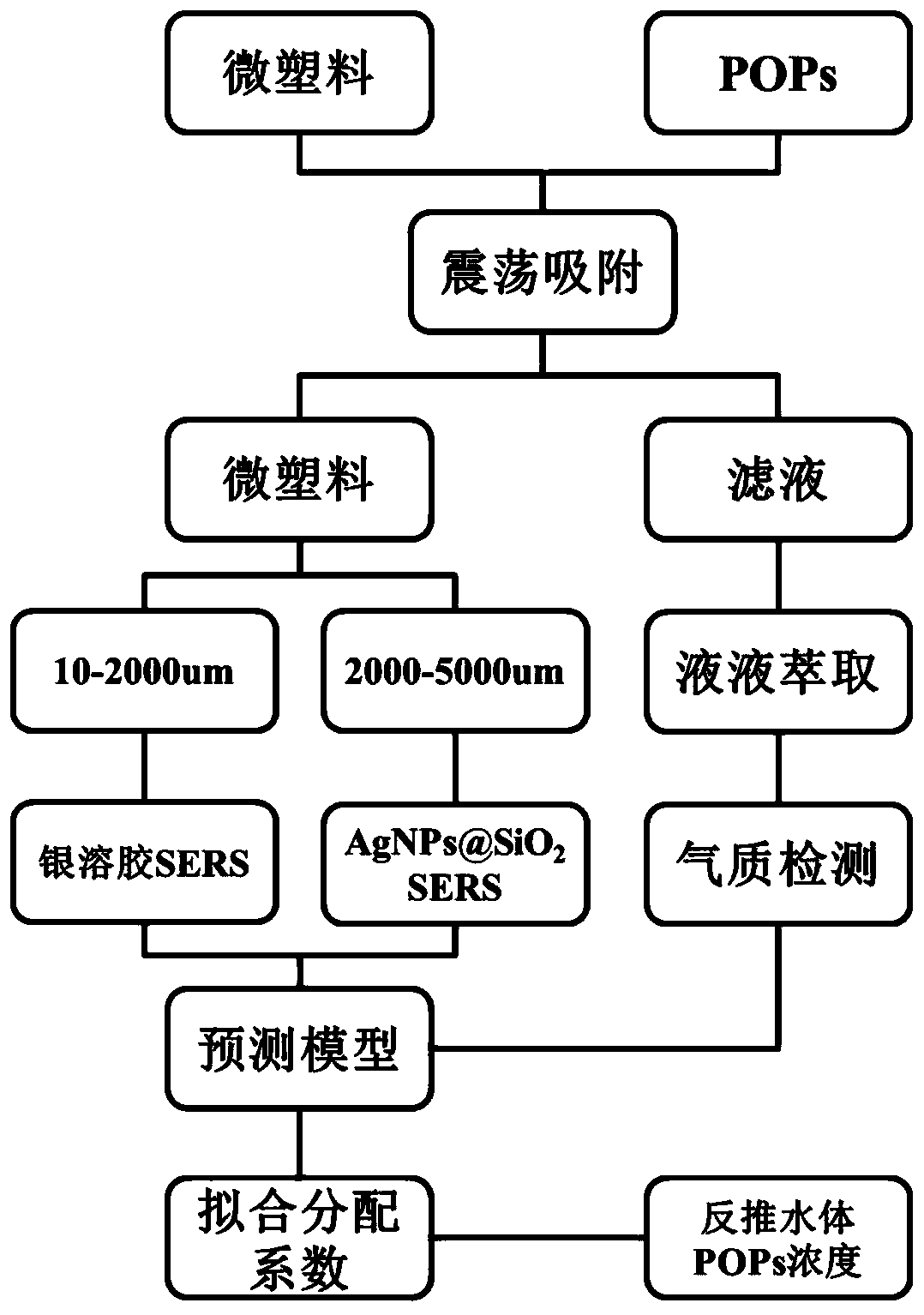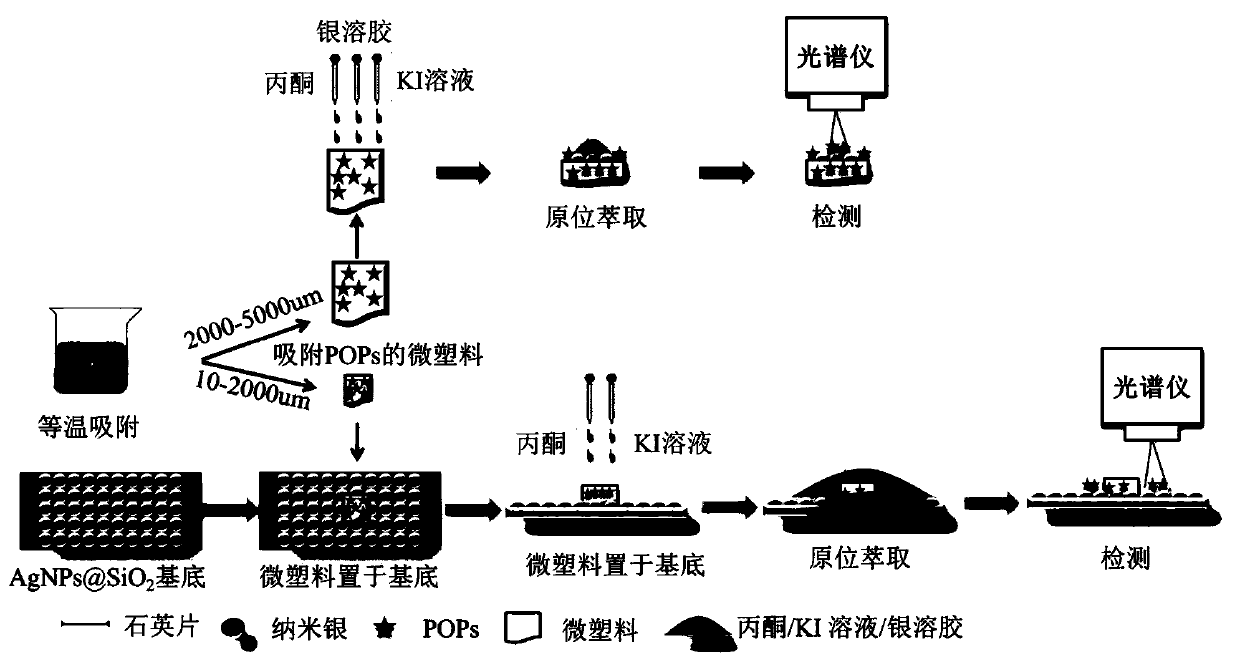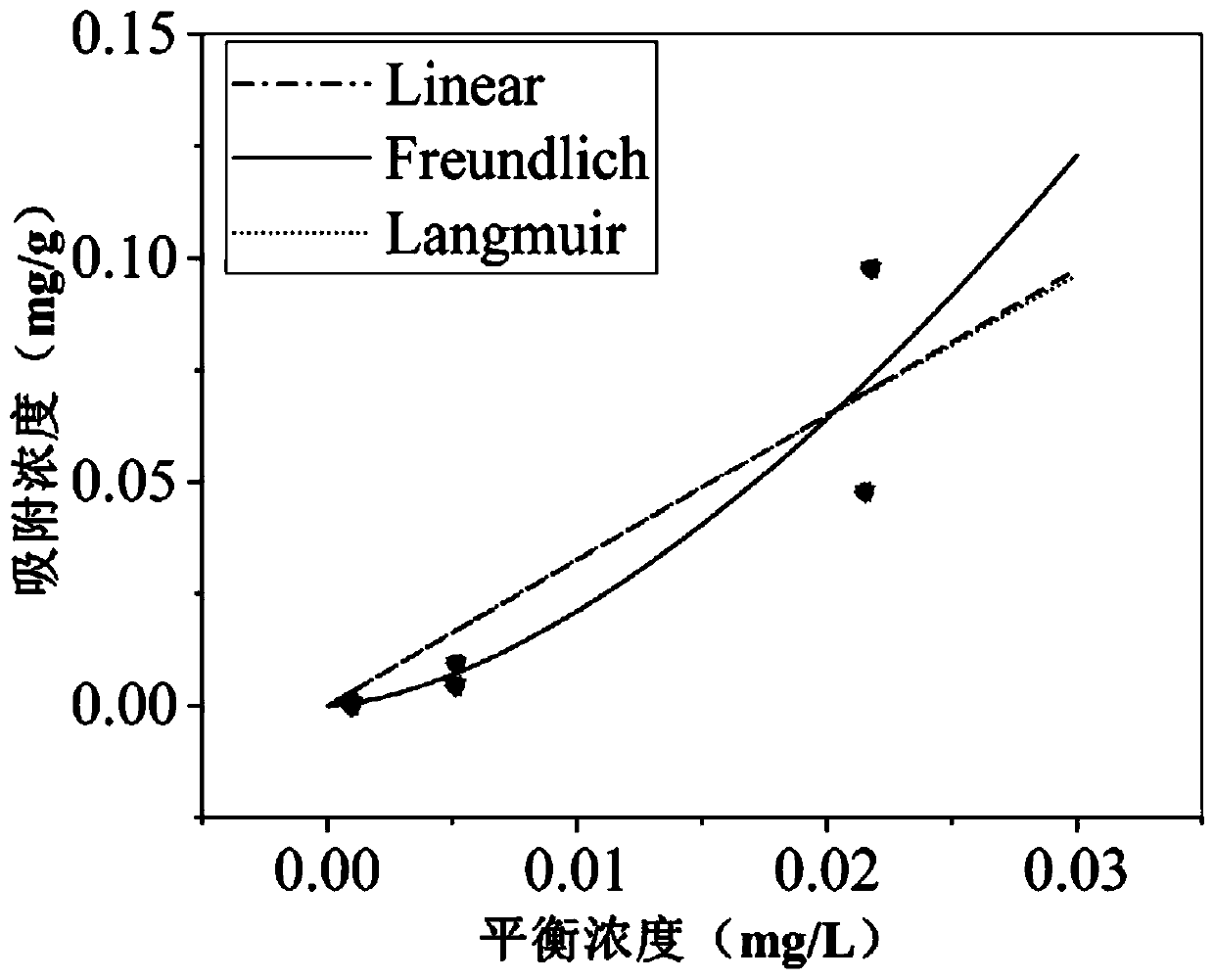SERS detection method for persistent organic pollutants in water body based on microplastics
A technology of organic pollutants and detection methods, applied in the field of SERS detection of persistent organic pollutants in water bodies based on microplastics, can solve the problems of time-consuming and laborious POPs detection
- Summary
- Abstract
- Description
- Claims
- Application Information
AI Technical Summary
Problems solved by technology
Method used
Image
Examples
Embodiment 1
[0060] Quantitative analysis of fluoranthene content in seawater based on microplastic in-situ extraction technology, SERS technology and chemometric analysis modeling method, qualitative and quantitative analysis of fluoranthene content on the surface of polyethylene (PE) with a particle size of 10-5000 μm , and then deduce the concentration of fluoranthene in seawater, the technical route is as follows figure 1 As shown, the specific steps are as follows:
[0061] (1) Preparation of microplastics pre-adsorbed persistent organic pollutants
[0062] Prepare a fluoranthene seawater solution with a concentration of 1-1000 μg / L, then weigh PE with a particle size of 10-5000 μm according to a volume-to-mass ratio of 1:10 (L:g), add the above-mentioned fluoranthene aqueous solution, and Vibrate at a speed of 130r / min in a constant temperature water bath (10-300μm microplastic shaking time is 1 day, 300-1000μm microplastic shaking time is 40 days, 1000-5000μm microplastic shaking t...
PUM
| Property | Measurement | Unit |
|---|---|---|
| Particle size | aaaaa | aaaaa |
Abstract
Description
Claims
Application Information
 Login to View More
Login to View More - R&D
- Intellectual Property
- Life Sciences
- Materials
- Tech Scout
- Unparalleled Data Quality
- Higher Quality Content
- 60% Fewer Hallucinations
Browse by: Latest US Patents, China's latest patents, Technical Efficacy Thesaurus, Application Domain, Technology Topic, Popular Technical Reports.
© 2025 PatSnap. All rights reserved.Legal|Privacy policy|Modern Slavery Act Transparency Statement|Sitemap|About US| Contact US: help@patsnap.com



